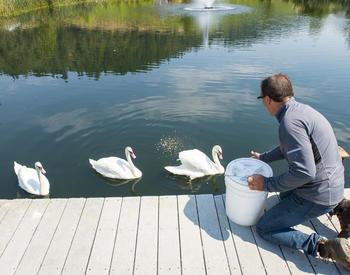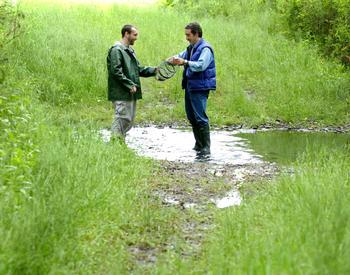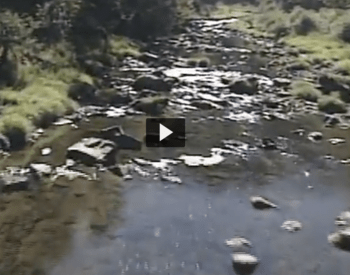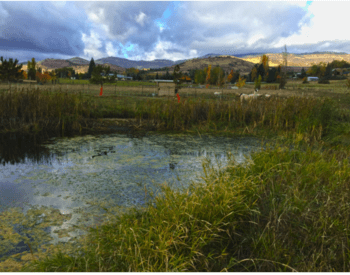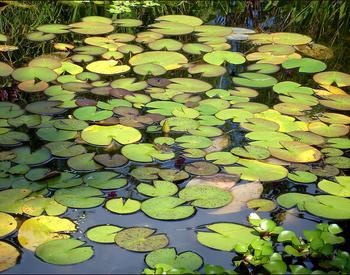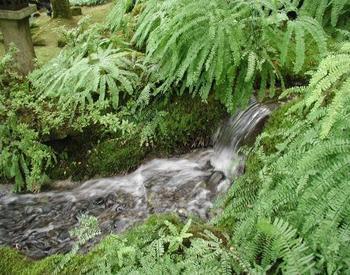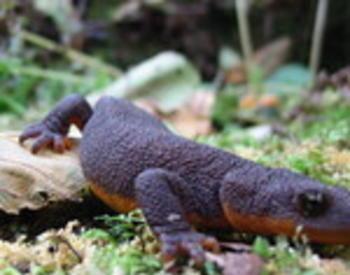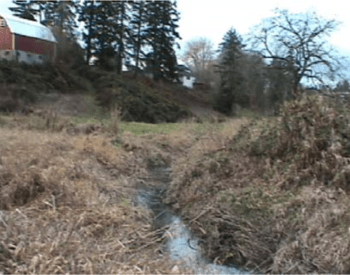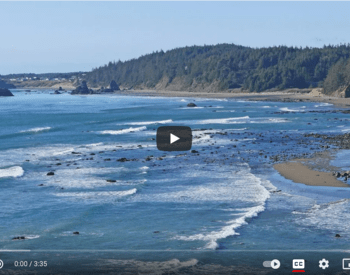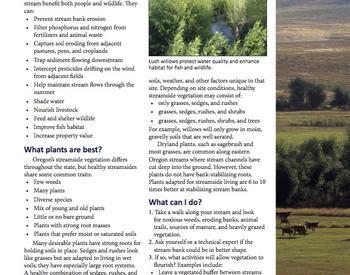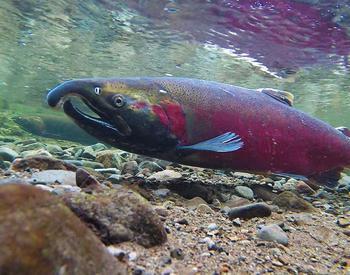Farmscaping describes a broad range of activities that improve the diversity of a small farm to enhance the ecosystem benefits it provides, including enhancing organisms for pest management. Farmscaping and enhancing farm diversity in general can also increase carbon sequestration, improve wildlife habitat and provide erosion control.
Riparian buffers are vegetated areas adjacent to waterways that filter and slow runoff while shading and providing habitat along the stream or pond itself.
Properly managed riparian buffers of native vegetation can enhance habitat for aquatic and riparian species, including fish and amphibians, as well as provide wildlife and bird habitat. Riparian shading around ponds can reduce sedimentation, evaporation and stream temperatures, which limit water quality for many native fish. Riparian buffers additionally filter nutrients in runoff and reduce or prevent eutrophication in irrigation ponds and natural waterways.
Timing
The start of rains in western Oregon marks the planting season for native vegetation. As farm production slows, these winter months are the ideal time to enhance riparian habitat around ponds and along waterways on the farm. By catching the rains early in the winter season, native riparian plantings have the maximum time to become established before entering the dry summer months.
Species and site design
A county Extension agent can provide a list of appropriate riparian species for a specific area. In general, riparian plantings include a mix of trees and shrubs and are divided into three zones:
- An inner zone, with species such as willows and rushes that require water to survive.
- An intermediate, bank zone that can tolerate high water and flooding, but can also dry out.
- An upland zone that does not tolerate flooding. Ideally, riparian plantings will have multiple vertical layers to maximize diversity and shading.
Wide riparian buffers, 50 feet and greater, will enhance water infiltration to the soil to filter runoff and reduce erosion.
Special consideration should be taken in designing riparian buffers around irrigation ponds. Irrigation ponds offer a wonderful opportunity to expand wildlife habitat on the farm while improving water conservation.
Care should be taken, however, to avoid negatively impacting irrigation infrastructure. For irrigation ponds, vegetation should not cover more than 50% of the pond and should be kept clear from spillways and irrigation outlets.
In areas without vegetation, structures such as basking logs and rock piles can provide additional habitat for reptiles and amphibians. For more information about enhancing pond ecosystems, see the National Resources Conservation Service's publication “Farm Pond Ecosystems.”
Site prep and planting
The OSU Extension publication “A Guide to Riparian Shrub and Tree Planting in the Willamette Valley: Steps to Success” provides six key elements of successful riparian revegetation.
To prepare a planting site, it is important to remove competing and invasive vegetation and to ensure that you can continue to control invasive weeds and plants, such as Himalayan blackberry, until the plantings become established. Bare root, containerized stock and cuttings are all planting options that require special care. Cuttings from species such as willow, cottonwood or red osier dogwood can be planted directly into the ground.
Cuttings should be planted deep enough to reach the water table at its lowest summer level. Be sure to plant according to the plan design developed to ensure that species are planted in the correct environmental conditions. Although these native plantings will eventually thrive without additional summer water, occasional irrigation in the first three years after planting will greatly enhance planting success.
Farmscaping benefits
The keys to successful farmscaping for pest management lie in monitoring pests and knowing the relationships between plants and beneficial insects. For pest management, riparian buffers can be enhanced with plant species known to harbor natural enemies of farm pests.
Riparian refuges on a farm also provide many other benefits that enhance the overall ecological function of a farm to conserve soil, protect water quality, improve native habitat, store carbon and enhance a farm's aesthetic appeal. Whether a few cuttings are planted along the edge of a pond or a large stretch of waterway is restored, winter riparian plantings will diversify and transform the edges of a farm for maximum ecological benefit.
